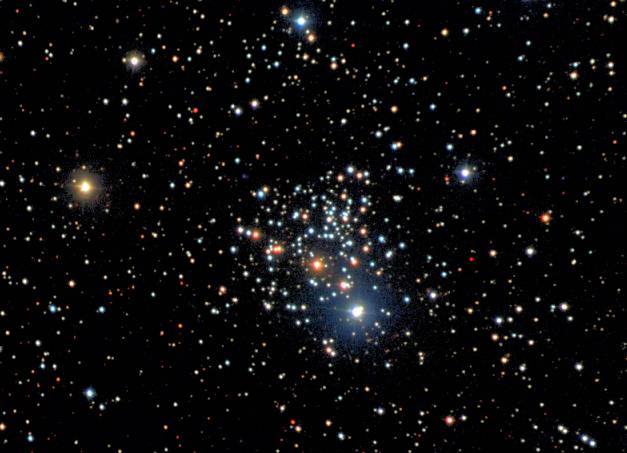On September 28th, 2015, amidst much fanfare and excitement, the Indian Space Research Organisation launched India’s very first space observatory: ASTROSAT. The space observatory allows for multi-wavelength observation of various astronomical objects with a single satellite; optical, ultraviolet, low and high energy X-ray regions of the electromagnetic spectrum can be observed through the ASTROSAT.
In less than a year, the Indian space observatory has already impressed the scientific community with its exciting findings and observations, including the gigantic gamma ray burst witnessed by ASTROSAT soon after the window of the telescope was opened. Its latest observation, however, is likely to impress not only the entire nation, but the entire world.
Thanks to the Ultra-Violet Imaging Telescope on board the space observatory, ASTROSAT has successfully solved a puzzle that had left scientists the world over stumped for decades; the puzzle of the red star in cluster NGC 188.

Image for representation only. Source: Night Sky Info
NGC 188 was discovered in 1831 by astronomer John Herschel. It has the distinction of being both the northernmost and the oldest open star cluster visible from Earth.
Stars that appear red in visible light are believed to be cool stars, while stars that appear bright in UV are believed to hot stars. One star in NGC 188 however, is both: red in visible light, and dazzling in UV, a clear contradiction that has baffled scientists for years.
“Now, with Indian UVIT data, scientists have nailed the problem — it turns out that this star is actually a binary system, of a hot and a cool star,” Biman Nath, an astrophysicist at the Raman Research Institute, Bengaluru told The Deccan Herald.
These observations were recently presented and reviewed at a meeting of the Astronomical Society of India at Srinagar.
Annapurni Subramanian, professor at Indian Institute of Astrophysics says, “The evolutionary process of these 2 systems is being studied based on the data collected by the UVIT and ground-based telescopes. The ASTROSAT would aid in solving many such mysteries in future.”
Featured image source: Wikipedia
Like this story? Or have something to share? Write to us: contact@thebetterindia.com, or connect with us on Facebook and Twitter (@thebetterindia).
If you found our stories insightful, informative, or even just enjoyable, we invite you to consider making a voluntary payment to support the work we do at The Better India. Your contribution helps us continue producing quality content that educates, inspires, and drives positive change.
Choose one of the payment options below for your contribution-
By paying for the stories you value, you directly contribute to sustaining our efforts focused on making a difference in the world. Together, let's ensure that impactful stories continue to be told and shared, enriching lives and communities alike.
Thank you for your support. Here are some frequently asked questions you might find helpful to know why you are contributing?

